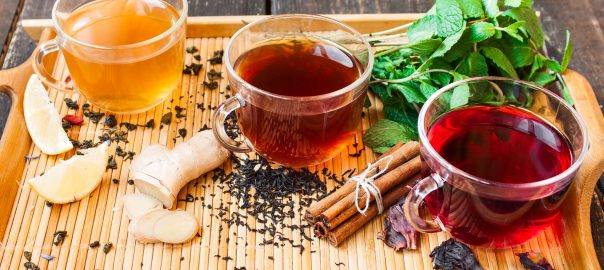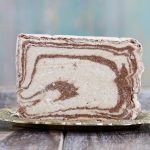
Exploring the Diverse World of Tea
Adventure Through the Diverse and Flavourful World of Tea
Aside from water and wine, there is probably no drink with a history as long and diverse as tea. For many people, tea has a cultural significance that is unlike any other type of drink, and some even view it as a spiritual experience. Whether you view tea as a religious experience or simply as a soothing beverage to enjoy on a chilly morning, you can’t deny how influential it is as a part of life for people all over the world.
In this article, we’re going to take a look at many different aspects of tea, including a bit of its history and where it originated, as well as the diverse array of tea types that have been cultivated and crafted over the years. Plus, we’ve got the details on how to brew the perfect cup of tea using the two most popular methods, so once you’ve discovered the type of tea for you, you’ll know how to make it right.
First, let’s take a look at the ancient origins of this wonderful drink and learn a bit more about its history.
History of Tea
While it’s likely that the story is much older than this, the earliest records of tea go back to the 3rd century AD in an ancient medical text from China. However, there are myths that date back even further, to the year 2373 BC where legend says that some tea leaves were blown in to some water being boiled for drinking, which then changed the taste and colour. The water was then tasted by the emperor, who believed it now possessed medicinal properties.
Of course, there are many other legends about the origins of tea, but they all point to an origin within China. From there, as the cultures of the world began to travel more extensively, it made its way to Europe and beyond, eventually becoming a worldwide cultural element. Most notably, it became an institution in England and the British Empire, with tea becoming an integral part of their culture and day to day life.
As tea evolved over such a long period of time, and each culture added their own traits to the processes and cultivation of tea leaves, different varieties arose that each had unique taste characteristics and brewing properties. Over time, the most popular of these became the standard types of tea that we know today.
Common Types of Tea
It should come as no surprise that a drink with such a long and diverse history would have many different variations that have emerged over so many years of experimentation and regional influences. However, perhaps the most interesting aspect of tea is that virtually all types of tea come from the same basic plant, which is known as the Camellia sinensis plant.
This plant forms the basis for most common types of tea, and the differences emerge through the variety of processes and preparation methods used to make the tea. The most notable exception to this is what is known as herbal tea, which can use a wide range of dried leaves from other plants to create unique and distinct flavours and characteristics.
In the simplest terms, the different types of common teas are different because of the amount of oxidation that occurs during the drying process of the tea leaves. Generally, the longer the leaves are dried and heated they will start to take on different characteristics that make them fit in to the main categories of tea.
Black – Black tea is the type that you are probably most familiar with. For black tea, the leaves are dried, rolled, and heated for extended periods of time to produce the boldest flavours. As a result, black tea also contains the highest concentration of caffeine.
Oolong – Oolong is a popular type of tea because of its robust flavours, but also because it is slightly milder than black tea. This is because oolong teas are not heated and dried for as long a time as black tea, resulting in a different flavour profile and a slightly lower caffeine content.
Green – Another very popular type of tea is green tea, which has a less complex processing method than oolong and black teas. Green tea has a shorter withering process at the beginning, resulting in a mellower flavour profile and a lower caffeine strength.
White – White tea is typically made only from the youngest leaves of the plant and undergoes the shortest drying process. This results in a very mellow flavour and the lowest caffeine content. However, white teas and green teas also contain increased levels of antioxidants not found in oolong and black teas.
Herbal – This category of tea features the widest variety of flavour possibilities but is also the most difficult to describe since they can be made from an extensive range of herbs, fruits, and other plants. Herbal teas may or may not contain caffeine and can have flavours that range from extremely bold to very mild, and even sweet and fruity.
How to Properly Prepare Tea
Preparing a perfect cup of tea requires a bit more than just boiling water and a tea bag. While those are the most basic ingredients, the actual process of brewing a good cup of tea is actually much more like brewing a really good cup of coffee. It required quality ingredients and the correct process to get it right.
There are two basic methods for brewing tea. You can either use a teabag that contains a pre-portioned amount of tea, or you can portion it yourself with loose-leaf tea and use an infuser. Both have their advantages, and both can produce a nice cup of tea. However, loose leaf offers much more customization based on your personal tastes, as you can easily increase or decrease the amount of tea you use to brew a cup or a pot of tea.
Regardless of whether you choose to use loose leaf or a tea bag, there are a few rules to follow that help you get the best flavour from your tea.
1 – Always use clean, filtered water. This will ensure that your tea has the purest flavour profile. You don’t want any unexpected tastes to skew the flavour of your tea, so you’ll notice the best results if you use clean and pure, filtered water.
2 – Get the right temperature. It may surprise you to learn that water that is fresh from boiling is actually not the best to use on your tea. You’ll actually want to wait a few minutes for the water to drop in temperature slightly before you pour it in to your cup or kettle. As a rule of thumb, black teas need water at around 95ºC for the best flavour, and the optimum temperature goes down by about 5ºC per increment as you go from black to oolong, to green, and to white.
3 – Steep your tea for the right amount of time. Once you’ve got the water at the best temperature, you’re going to want to be patient and let your tea steep for the right amount of time to get the best results. Most teas will have steeping times listed on the package, but this also requires a bit of practice. While the tea manufacturer may recommend a certain time, your personal tastes may vary, so don’t be afraid to experiment with a little more, or a little less steeping time.
4 – Milk & sugar? You can add milk and sweetener to your tea to mellow the flavours and sweeten it if you like, but this is an entirely optional step. There are no hard and fast rules when it comes to adding milk and your preferred sweetener, so do what you feel is right. You’re perfectly fine to just sip your tea without anything else added, and you can also mix things up however you like. At this point, it’s your cup and no one elses.
Start the Kettle, It’s Tea Time
Now that you’ve got the essentials on how to make a great cup of tea, the time has come to start up the kettle and get some water ready for your next cup. Tea is a great way to relax at the end of a long day, or to help wake you up and get ready for your next adventure. Whatever your taste may be, you can be sure that you’ll find a wonderful tea that suits your mood.
To explore a wide range of teas and discover flavours from around the world, check out the delicious teas available at The Low Carb Grocery from top-quality brands like Sahara Tea and Teatulia. We’re sure you’ll find the right tea for you.






